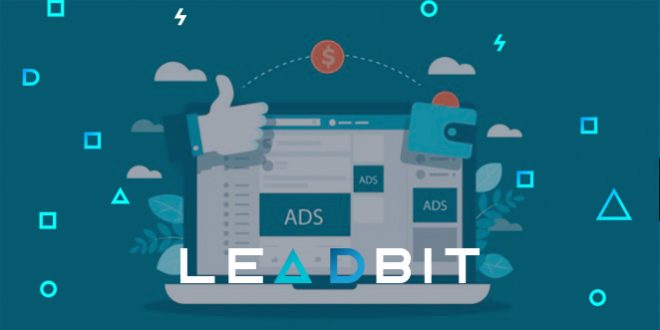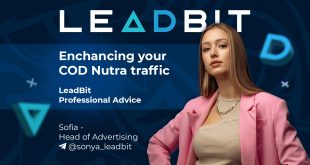Marketers write whole odes about advertising on Facebook on the Internet. More than three billion users who voluntarily post literally everything about themselves: hobbies, where they rest, car model. Communities by interest and detailed statistics of visits allow you to accurately build a model of audience behavior. This marketing tool works great, and it is a bottomless source of customers for just about any vertical. But you run an advertising campaign and … it doesn’t work! There are few clicks despite a decent number of impressions, or vice versa, there is a budget, but everything stands still.
As with other ad exchanges, ad campaigns need to be set up correctly. But in the case of FB, there are much more possibilities, and the setting is more subtle. Just think, there are 30 sections in Ads Manager, 11 goals to choose from for optimization, 17 types of placements, 4 different ways to gather an audience. There are ready to use templates, artificial intelligence (AI) is involved.
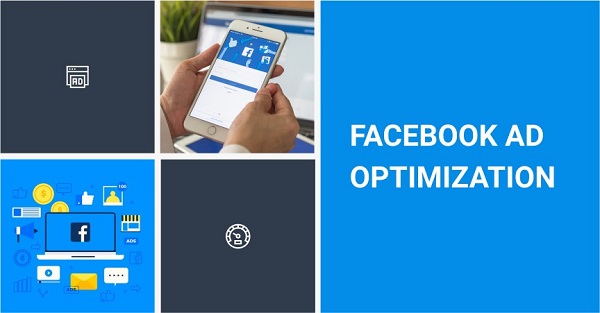
Do you think this is impossible to understand? It’s not that difficult. We at Leadbit are familiar with the interfaces and capabilities of Facebook Ads Manager. This comprehensive guide will put everything in its place. After reading, you will be able to fine-tune campaigns, effectively manage them, choose the right goals, and achieve the expected result. The main thing is that the launch of a new advertising campaign will take no more than 5 minutes. So let’s go.
Table of contents
Ads Manager: where to start advertising on Facebook?
Facebook pays significant attention to business, periodically adds new tools to simplify the promotion of services. There is a built-in store, an advertisement can be created directly from the profile. But how do you manage it? View statistics, customize audiences, plan a budget? For this, the Ads Manager is used.
Facebook Ads Manager is an interface for managing ads on Facebook, Instagram, FB Messenger and Audience Network. The functionality offers flexible customization of the audience, provides much more opportunities than traditional traffic exchanges, which are often seen as an alternative to FB Ads, including search advertising (Google Ads, Bing Ads, YAN).
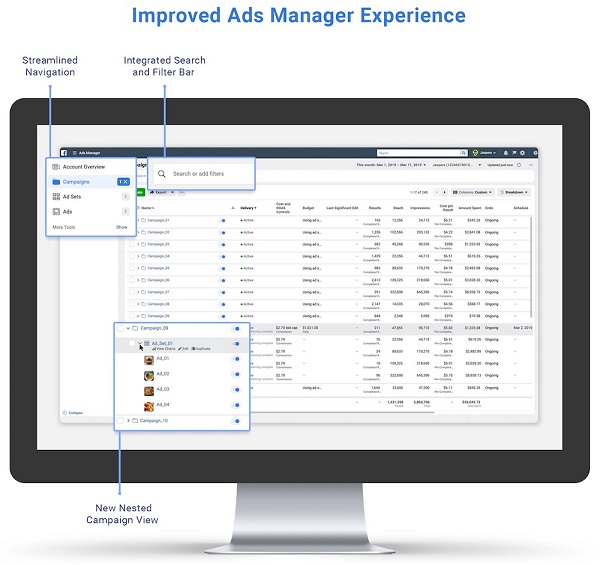
Here are just some of the options:
- interface for creating advertisements – allows you to add images, an inscription, see how advertising looks on desktops, mobile screens;
- audience setting – you can create audience groups in advance, create your own creatives for each target audience in one click. You do not need to set up targeting every time, you can avoid overlapping audiences and competing among your ads;
- budget management – you can keep track of bids manually or choose automatic management (Facebook uses artificial intelligence);
- editing campaigns – you can change the budget, replace creatives, edit active ads at any time without stopping the advertising campaign;
- dynamic creatives – add multiple images, prepare videos, design conversion headlines – Facebook will combine different elements to achieve the best impact with different audiences;
- A / B testing – not sure which ad will work best? Prepare several creatives, Ads Manager will show them to different target audiences and determine what results it brings;
- detailed analytics – in the interface you can see which ads received the attention of users, how the audience reacts to them, which ones brought a conversion;
- Facebook Pixel – add a small script to your store or corporate portal that monitors users’ actions on the site and reminds them of an incomplete purchase or displays ads in the Facebook feed.
Ads Manager is a free tool. There is only one condition – you need to create a Facebook account. At the same time, in Instagram, even if you plan to buy advertising there, it is not necessary to register. You can find “Advertising Manager” in the “Application Menu” (looks like this:) or by following the direct link www.facebook.com/adsmanager. Mobile software has been developed for iOS and Android.
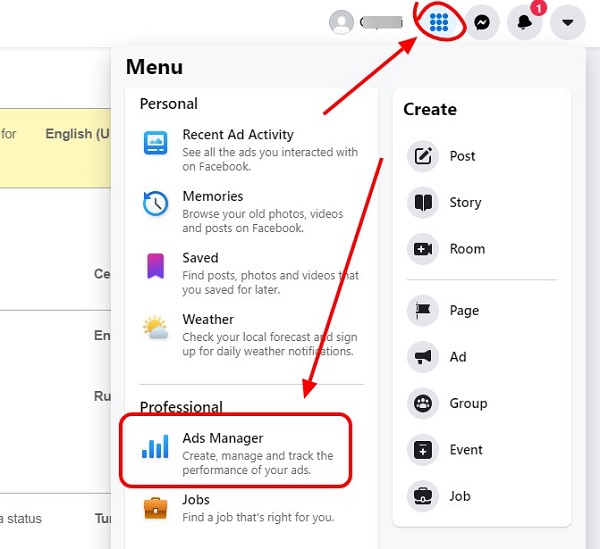
What does Business Manager mean?
Ads Manager is a handy tool for running advertising campaigns. But what if a whole team is working on promoting the store? Or does an ad agency run five or ten campaigns for different brands at once? For such cases, Facebook has developed Business Manager. What is it, how is it different from the basic “Advertising Manager”?
Comparison between Ads Manager and Business Manager
| Business Manager | Ads Manager | |
| Ads Account | 25 | 1 |
| FB Pixels | 10 | 1 |
| Multiple payment methods | + | – |
| Access to other pages | + | – |
| Access to other Pixels | + | – |
| Catalog | + | – |
| Dynamic remarketing | + | – |
| Access rights management | + | – |
Business Manager is a more advanced ad management tool. It includes the capabilities of Ads Manager, but allows you to manage multiple ad accounts, different pages and people who work in a team at once. Additional functions:
- management of several advertising accounts, different budgets from one cabinet;
- you can add other team members to participate in the project, differentiate their rights;
- differentiation of statistics for different advertising campaigns.
Business Manager is, first of all, a separation of the personal Facebook profile and advertising activities. Other employees will not be able to access your personal account, correspondence, photos. It is convenient to manage several advertising campaigns from one account: for one, set up payment from the card, and for the other – from a virtual wallet (PayPal, Skrill), add several Pixels for different sites.
Business Manager is essentially an advertising workspace that allows different team members to work with Facebook ads. Unlike the basic functionality created for affiliate marketers, private entrepreneurs and small firms, it is suitable for advertising agencies, large companies with PR departments
Business Manager – free tool. You can find it in the Ads Manager account (go to the Facebook Business home page) or by using the direct link business.facebook.com.
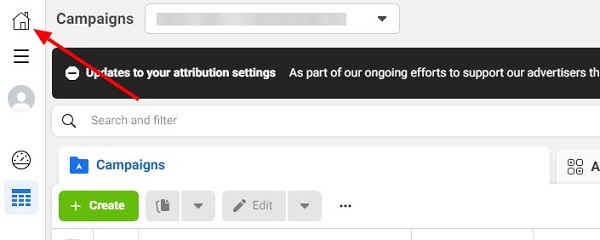
Optimizing FB ad campaigns: what is it and why do I need it?
As stated in the Oxford Languages Dictionary, optimization is choosing the best possible solution that gives the best results. It sounds a bit clever, but this is the concept that most people understand the term “optimization”. A logical question: Why all this? Don’t we optimize ad campaigns when we test different creatives and set targeting settings?
The Facebook ad campaign optimization tool is an ad machine that does most of the hardest part of the job for you. Artificial intelligence is constantly learning. 50 impressions are enough for the system to determine the optimal parameters. Shortly:
- conversion is at least twice as high as that of a team of advanced marketers, usually the results are three to four times better;
- the cost of the targeted action is from 30 to 50% lower, Facebook will display ads in such a way as to use the budget with the greatest efficiency and achieve the set goal.
Optimizing Facebook advertising campaigns is more than choosing a target audience by interests, GEO, age. The developers offer a unique tool with the connection of artificial intelligence, where you can set the desired goal – the rest will be done by the system itself.
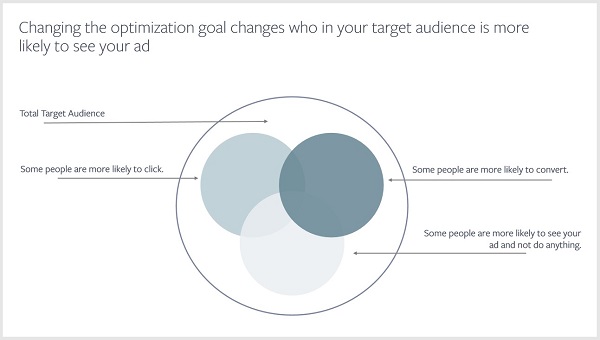
You set up an audience, and Facebook, evaluating user behavior from a sample, will show ads to those visitors who are most likely to take the desired action.
Moreover, if this is your first encounter with advertising and do not know where to start, choose automatic settings. Facebook generates the ad itself and chooses who to show it to.
There are options:
- “automatic placement” – automatic selection of a place for displaying ads (news feed, messenger, instagram);
- “dynamic creative” – add several titles, videos, pictures, descriptions. Ads will be generated from them automatically;
- “optimization by goal” – auto-optimization of a campaign for a specific task (more clicks, more impressions, installs, engagement, sales).
When working through other advertising exchanges, you can get the desired effect only after marketing research. You have to understand payment models, study advertising approaches, read hundreds of forums in order to understand how the audience lives, how it reacts to a particular action. Facebook Ads Manager has already collected the necessary information about users and will select the settings for the advertising campaign for you. It is enough to indicate the goal, add pictures, come up with headlines, indicate the budget. Facebook will serve your ad to interested people who are more likely to take the desired action.
The goals of the optimization
A total of 11 goals from 3 sections: recognition, consideration and conversion. If you need to announce a new brand, tell about the appearance of a new product – Facebook will display ads so that as many people as possible in the selected region can see it. Pay not for clicks, but for impressions. We need sales – ads will be seen by people interested in the product, who are highly likely to bring a lead. Do you want to gain engagement or promote a mobile application – Facebook knows who is most likely to install your software, leave a comment or like.
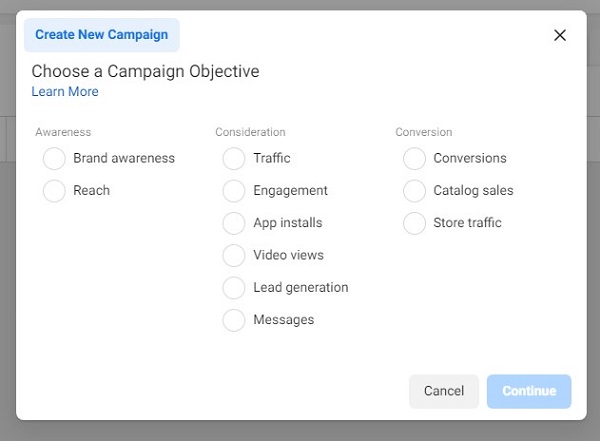
Goals of the optimization:
Awareness:
- brand awareness – allows you to achieve recognition of a new brand. Algorithms will focus on making the maximum impressions, while users will see the ad several times;
- coverage – the maximum coverage within the specified audience (by GEO, interests), assumes that the ad will be seen by the maximum number of users. Choose if you need to tell about the launch of a new product or service.
Considaration:
- Traffic – choose a target if you need to increase conversions to the site. The algorithms evaluate the target audience’s behavior and show the ad to those visitors who are more likely to click on it. Important! Links to other social networks will not be moderated;
- Engagement – when promoting groups in social networks, natural traffic is needed. The ad will be seen by people who like, leave a comment, repost;
- Installs – promotion of mobile applications for iOS, Android, advertisements are seen by visitors who often install programs on their smartphones;
- Video views – not everyone watches video ads, but if this is the main goal, Facebook will find interested people with good patience. Be careful, no one will watch marketing videos that are several minutes long;
- Lead generation – the goal is suitable for selling goods through Facebook. Create an application form in the “advertising manager” office, select the “lead generation” goal and receive applications. Be careful, in the form of no more than 3-4 fields, use a lead magnet (a discount for an application, a free course, a book or a pdf brochure);
- Messages – select this target if you want to get to know your audience better and connect with them through private messages. Suitable if you are selling directly on Facebook. Can be configured to send messages to Facebook Messenger or WhatsApp.
Conversion:
- conversions – the goal works only in tandem with FB Pixel, allows you to set up advertising so that you can receive applications through the website: placing orders, adding an item to the cart, filling out a form for a call back;
- sales of goods from the catalog – the goal is suitable for the promotion of an online store. Facebook allows you to add products from the store to the Advertising Cabinet in a few clicks and will advertise specific cards to users who were interested in this or a similar product;
- attendance – the goal is suitable for the promotion of offline objects: shops, cafes, galleries. During configuration, you need to specify the physical location, specify the radius of the GEO.
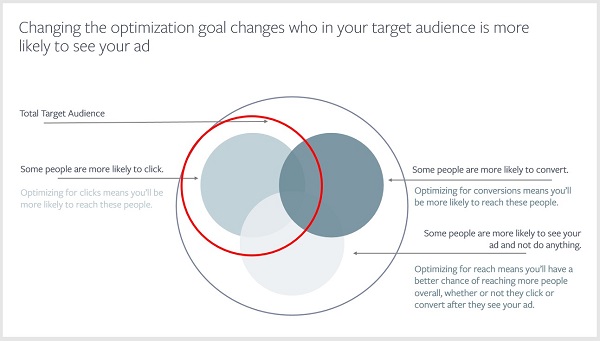
Optimization is an automatic process. But you still can’t do without the participation of an advertiser. The person remains in charge. How to set up an advertising campaign correctly, what to look for?
Optimization campaign in Facebook
To run effective Facebook ads you need a basic understanding of how things work. Everything you need to know about optimizing Facebook advertising campaigns is in this section.
Auction bids – how does the exchange determines what ads to show
To advertise on Facebook, you need to compete with others in the auction. A lot is not a product, but a specific audience (more precisely, a user who meets the criteria: age, gender, GEO, interests), to which the ad will be shown by the social network. Based on the principle of determining the winner, the algorithm is similar to eBay – the one who agrees to pay the most wins. But exactly as much is withdrawn from the account as needed to win – the amount of the second bet plus the minimum step of changing the bet. Therefore, even if you specify a bid amount of $ 150, you will pay an average of 3-5 bucks – this is what most advertisers expect. But this does not guarantee that by declaring one and a half hundred bucks, you will automatically win all the auctions.
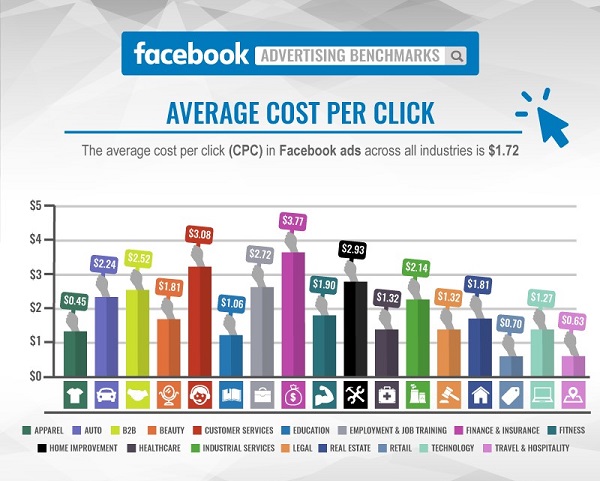
But this does not mean that you have to spend huge sums to see your ad. The auction is held automatically every time the system is going to show an advertisement to one of the visitors. More than 2 billion draws daily. Therefore, the question is not whether site visitors will see your ad (they will see it), but how often they will see it and what the coverage will be. Even if you have specified a bid cap of 30-50 cents per click, Facebook can keep your bid even below that price. And there is a second factor that allows webmasters and affiliates to outperform large agencies.
No matter what anyone says, the main goal of Facebook is to make money. The system will show the ad with the highest return. And it depends on several indicators. When conducting an auction, in addition to the size of the bid, the service takes into account:
- ad quolity. If the banner is poorly composed, does not reveal the essence, users simply will not click on it. Facebook will not waste money by occupying ad spaces with ads that have no return. Instead, it will show you conversion creatives that will be profitable even if your bid is lower.
- click-trhough rate, relevance. Facebook understands that the main asset of a social network is ordinary people, users of the service. He will not annoy the audience in vain and selects ads to suit their interests. Everything is simple here – the more conversions, the more advertisers place ads and the higher Facebook profits;
The social media algorithm estimates the conversion chances and multiplies them by the cost of the bid. First of all, the creative with the higher result will be shown.
The formula by which the winner is determined:
Bid (maximum how much you are willing to pay) * estimated frequency of actions + value to user (ad quality) = total value.

Example. You have launched a flower advertisement for Moscow with a rate of $ 2 per click, and a competitor is ready to pay no more than $ 1.5. But he has cool ads and better prices, CTR 3.5%, you only have 0.95%. Potentially for 100 impressions, Facebook will earn on you: 100 * 0.95% * 2 = 1.9 $, less than two bucks. In the case of a competitor, the site’s earnings will be $ 5.25 – two and a half times more. Therefore, he will win, first the audience will see an ad for a competing store, then yours. The bottom line is that with a lower budget, your competitor will have more ad impressions per day.
Another example. Two advertisers fight for one audience: men and women from 25 to 35 years old. One sells sports nutrition, the other sells sports equipment for alpine skiing. Marketers have prepared some awesome ads with the highest value on the FB scale, but now is the end of the season. Visitors are no longer interested in equipment, but they are now looking for proteins, vitamins, and other supplements to support the body in the spring. I think there is no need to explain whose ad is more relevant to the needs of the target audience, which means that Facebook will be showing it more often. High-quality creatives allow you to reach a large audience and reduce the bid size and cost of conversion
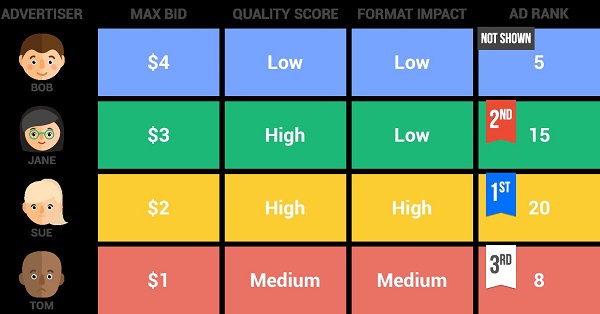
Examples are for illustration purposes only. The FB calculation algorithm is more complicated. CA 25-35 years old is very heterogeneous, even within the boundaries of one city. Some are interested in a healthy lifestyle, others in sports nutrition, home improvement, or cannot live without parties. Someone is happy to repost interesting posts, while others do not miss a single action. The Facebook audience is billions of people, so both your ads and competitors will be shown to different people with different frequencies.
The developers of the largest social network understand that it is necessary to take into account the interests of all parties: users, advertisers. Therefore, they will help, even with a minimal budget, to get a return without annoying users. But understanding the algorithms for selecting bids allows you to prepare and achieve high conversions with minimal investment.
Bid models
As with other traffic exchanges, different bid models are available when launching ads on FB:
- CPM – cost per mile, payment for impressions;
- CPC – cost per click, payment for clicks;
- CPV – cost per view, payment for video views;
- CPE – cost per engagement, payment for interaction.
Which model is the best? There is no single answer. It all depends on the goal.
Pay per impression (CPM) is the most affordable format (on average, the rate per 1000 impressions is the same as for one click), it is best suited if you need to reach as many users as possible. But if there are awesome creatives with high click-through rates (CTRs), the pay-per-impression model saves a lot of budget compared to CPC.
CPM is set by default for all optimization purposes. The option is available for accounts from which more than $ 10 was paid for advertising. The main disadvantage is that if the creative is of low quality and there are no conversions, you still pay for ads.
If you need to get conversions, choose pay-per-action. You can pay for a click and transition to a site or landing page (CPC), like, repost comment (CPE), viewing video ads – at least 15 seconds (CPV).
Available advertising payment models for different optimization purposes in Ads Manager
| Goals | Payment model | |||
| CPM | CPC | CPE | CPV | |
| Awareness | + | |||
| Coverage | + | |||
| Traffic | + | + | ||
| Engagement | + | + | ||
| Installs | + | + | ||
| Video views | + | + | ||
| Lead generation | + | |||
| Messages | + | |||
| Conversions | + | + | ||
| Catalog sales | + | + | ||
| Store Traffic | + | |||
The advantage of CPC, CPE models is that you don’t pay for impressions. If there are no clicks, there is no waste, this is convenient if there are no statistics yet or you are just choosing between different ad options. And you can plan your budget accurately (CPC has more even conversion rates compared to CPM). Disadvantage – for creatives with high click-through rates, the cost of attracting a customer (lead) increases.
In social media, the CPE model is additionally used. Assumes audience engagement: reposts, likes, comments. It is often used by brands when launching a new product to increase trust, increase interest, and attract organic traffic.
Bid strategy
A bid strategy or model is a specific algorithm by which Facebook will spend its budget. There is an aggressive option that allows you to win most of the auctions and quickly promote a new brand or product or service. But the budget will be spent faster, and the cost of conversion will increase. The alternative is to get the maximum amount of action within the allocated amount for advertising. However, you will have to wait longer and expand your audience reach.
Models are not limited to black and white, there are intermediate strategies to achieve specific goals. In any case, you will receive traffic, but how good will it be and not have to wait for months?
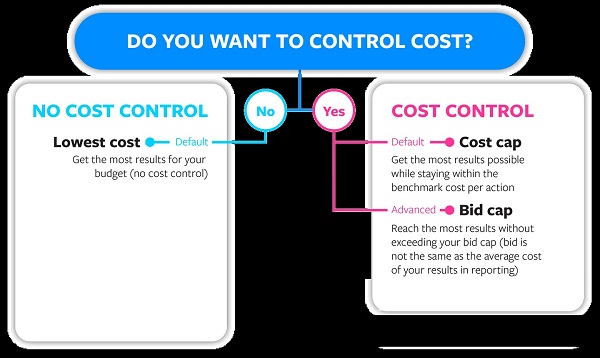
The essence of the strategies is to provide the advertiser with the opportunity to plan a budget, more clearly define the desired results, and remove the risks of getting a loss. Naturally, everyone has their own tasks. For an online store and an affiliate marketing on FB, the task is to make money on the difference between the cost of attracting a lead and the price of selling, partner reward (on margin). Brand owners, manufacturers – to loudly announce a new product and achieve audience engagement. For small entrepreneurs – inform potential clients about their service. Strategies are different everywhere.
For advertisers, Facebook Ads has developed several strategies:
Automated bidding
The system itself decides how to distribute the budget based on the results of evaluating competitors’ campaigns. The main purpose of the machine is to get the maximum number of actions (usually impressions or clicks) and at the same time spend the entire budget until the end of the advertising campaign. The automation is good if:
- you do not have information about the audience, rates and you need to quickly get statistics, covering as many potential respondents as possible;
- you want to find out the reference value of the bid for the formation of the advertising budget;
- you need to get maximum coverage with a small budget.
There is also a drawback: in some verticals, the cost of a lead may be higher than that of other strategies.
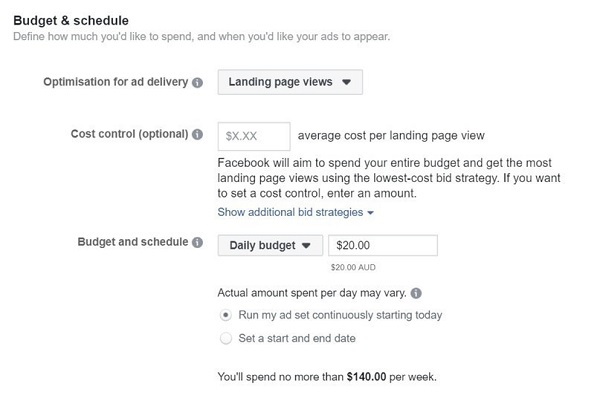
Lowest Cost
This is a strategy with minimal intervention of the automation. The system will select the lowest possible bid price so as to get the maximum number of impressions and evenly spend the budget until the end of the advertising campaign. Naturally, the value of the bid will fluctuate depending on the competition at the auction.
The strategy is suitable if:
- you need to reach as many users as possible, inform about the event, product release;
- there are no requirements for click-through rate and profitability;
- there are no strict restrictions on the price of a lead.
The strategy assumes minimal intervention of the automation.
Highest Value
Another strategy where artificial intelligence determines the rates based on the budget. The model has three tasks at once:
- completely spend the budget until the end of the advertising campaign;
- to achieve an increase in conversion, to get maximum leads;
- maximum conversion value – the model is focused on attracting money customers.
“Maximum Value” is suitable for selling expensive products when the cost of acquiring a customer is not that important. These can be premium pens, cars, or expensive bouquets. Naturally, the bid price will go up in order to win the most converting auctions. But due to the high conversion, the cost per lead will not be much higher than with other strategies.
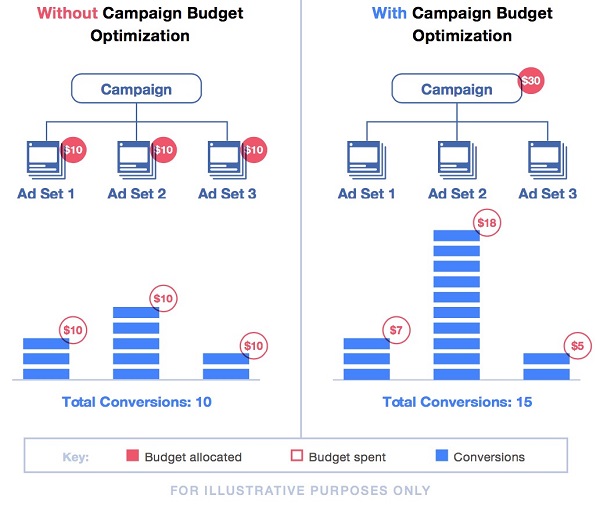
The advantage of the strategy is the guaranteed growth of sales on the automation. Use the strategy during the promotion period, when you need to squeeze the maximum out of a limited time frame. If you have multiple products in your campaign. Facebook should allocate budget to give more impressions with the highest conversions and increase sales.
Cost Cap
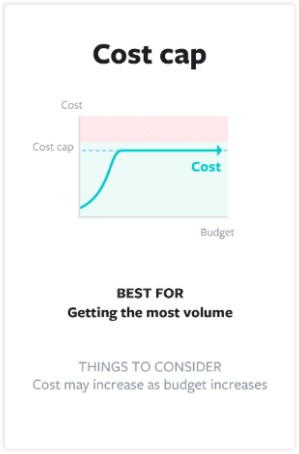
This strategy, where in the first place is not the cost of the bet, but the chosen goal. The system keeps prices at an average level or below, regardless of the conditions on the traffic exchange (auction). This takes into account not just the cost of showing an advertisement, but also calculates the cost of conversion (cost per action). This strategy allows you to more accurately plan the budget both during the promotion period and for the long term.
Features of the strategy: it takes more time to train AI, the budget will be spent more slowly. At the training stage, the size of the bet may go beyond the established limits.
Return on investment (minimum ROAS)
This strategy is suitable if you need to guarantee your ROI. Suitable for marketers, who work with affiliate programs, and stores. The good thing about the model is that you can set the cost and ratio (ROAS) to make sure you make a profit.
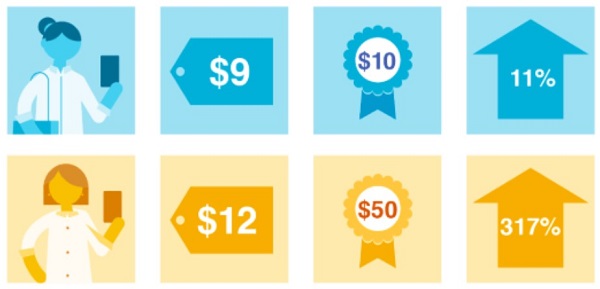
This strategy involves longer training. Requires the inclusion of the Facebook Pixel end-to-end analytics script. With the “Minimum ROAS” model, artificial intelligence will calculate the conversion so that the profitability is not lower than the specified level (set as a coefficient: k 1,100 is a 110% return on investment in advertising). As with “Highest Value”, when promoting several products at the same time, or promoting a service for different audiences, the budget is reallocated in favor of impressions with a higher return on investment. Between a $ 1 impression with a $ 5 sale value and a $ 5 conversion with a potential profit of $ 27, the system will choose the second option, because there the ROI is higher.
If the ROAS value is too high, the advertising campaign will stop, even if the budget is not used up. Ad serving is possible due to the low quality of the creatives – after testing (50 test impressions), the AI did not achieve the expected conversion.

Provides maximum control from the advertiser. You set the maximum bet amount. The system will not go beyond its limits, in accordance with the goals set, it will try to achieve a balance between price and conversion, but in a limited corridor.
The strategy is suitable for reaching an audience, increasing engagement (views, reposts, installs). Allows you to plan your budget more competently. But there is also a drawback. If you set the price to $ 10, then the bid will not be higher, even if there is a lot of conversion traffic available for the $ 10.01 price. Therefore, it is necessary to constantly participate and adjust the price according to the situation.
Budget Pace
The parameter allows you to specify how quickly the money will be spent. The advertising platform uses two approaches:
- discount rate – the size of the bet is increased or decreased so that EQUALLY SPEND THE BUDGET until the end of the campaign and achieve the minimum price;
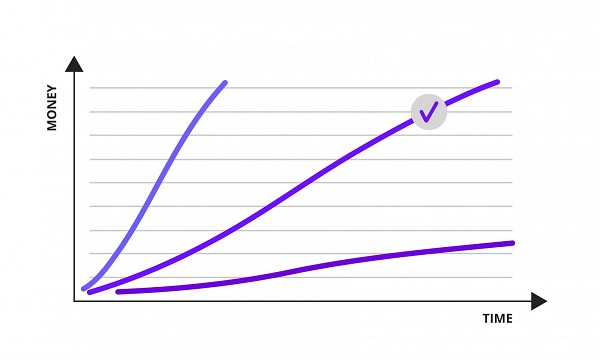
- probabilistic rate – AI predicts a possible price in advance, the main goal is a STABLE NUMBER OF IMAGES at certain intervals. The system does not participate in all auctions.

Additionally, you can select the type of delivery: Standard – even distribution of impressions according to a given schedule, Accelerate – accelerated, the budget can be spent before the end of the advertising campaign. A detailed guide to betting strategies can be found on the official Facebook page. And a little more here.
Ad Format
Optimization, targeting settings, end-to-end analytics … All of this is useless if you can’t reach your audience through creatives. The user must himself want to click on the ad, leave a like, make a repost. The message needs to be conveyed clearly. Otherwise, potential customers will ignore the ad, or vice versa, there will be many transitions from non-target users who are not interested in the service. The result is one – the cost of a lead will increase.

It is not only the content that matters, but also the format of the ad that will be easy to view. You can create ads on Facebook:
- Banners (image). A universal way to attract attention, tell about yourself or an affiliate product, increase traffic to the site. Quick start. Suitable for Facebook and Instagram feeds. The text can be placed on the picture, leave a signature above it. Recommended image sizes: 4×5, 1×1, 9×16;

- Video. Animates the product, demonstrates strengths, make the story interesting. Compatible goals: reach, audience engagement, site traffic, installs. You can write up to 125 characters over the creative. Accepted formats: MOV, MP4 (16 x 9, 9 x 16);

- Carousel (ring gallery). Allows you to place up to 10 banners / videos with different links, signatures in one ad. Suitable if you need to talk about several products from one niche at once. Goals: reach, recognition, lead generation, installs, traffic to the site, conversions, sales. Format: 1 x 1 (1080 x 1080 px for video). Disadvantage – conversion is usually lower than for single banners – users rarely scroll to the end, if a random picture is not interesting, they will ignore the ad.
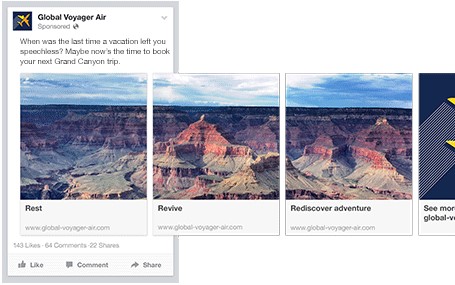
- Selection. A way to quickly familiarize yourself with the product and immediately buy it. Consists of one large banner and four small ones. Most effective for selling physical goods. Goals: traffic, conversions, sales, locations. Pictures (Jpeg, PNG), videos (MP4, Mov) with an aspect ratio of 1 x 1 are accepted;

- Slideshow. A symbiosis of video, banner and carousel. You can add up to 10 pictures, add sound. Loads faster. But dedicated to one product. Allows you to quickly launch a new campaign, it is convenient to create even from mobile devices. Requirements as for conventional banner advertising. Conversion is higher.
When working with creatives, follow the guidelines of Facebook and use its advice. First of all, avoid prohibited ad formats (“before and after”, “shocking images”), if the ad image contains text, it should not occupy more than 20% of the area. Before developing creatives, see the Ad Guidelines and Guidelines.
Targeting
Facebook ads are targeted. The system anonymously collects information about users, gives the advertiser the opportunity to choose who to show ads to. What does it mean?
When setting up targeting, you cannot see the user’s personal data: name, surname, age, gender, phone number, where he lives, what he is interested in, from which device and from which browser. But this information is in the encrypted database and Facebook can be instructed to show ads to people who meet the criteria. There are targeting settings in any traffic exchange, but Facebook has an order of magnitude more options.
You can specify a very detailed description of the audience. There are three options:
- geo targeting – choose a country, city or put a specific location on the map. The menu allows you to set several GEOs;
- “detailed targeting” – fine tuning, where gender, age, interests, education, place of work (in which industry), position, income are indicated;
- connections – we select visitors who interacted with the page on the social network or visited the advertiser’s website.
When setting up geo-targeting, you can set a goal and choose who will see the ad: people who live in the location come here from time to time or tourists.

Targeting settings are one way to optimize your budget. If you define the audience correctly, you can increase click-through rates, conversions and minimize the cost of attracting a lead. If the settings are incorrect, there will be a lot of non-targeted clicks – the lead price will rise.
Therefore, the first stage is the development of a portrait of the target audience. It is universal for different advertising platforms. There are several methods. The most expensive is to order marketing research from a third-party company. Such spending is optional. There are many open source statistics (forums, blogs). For a relatively small fee ($ 10-20), information can be obtained on sites such as Statista, SimilarWeb, SemRush – some of the data is freely available for free.
The most accurate source is your website. Use metrics, tools for collecting analytics that will help you better know your audience: where, from what device, age, gender. Install the Facebook Pixel Script, an end-to-end analytics tool. He will collect data about site visitors, will be able to see what they viewed products, who placed an order, who just added products to the cart.
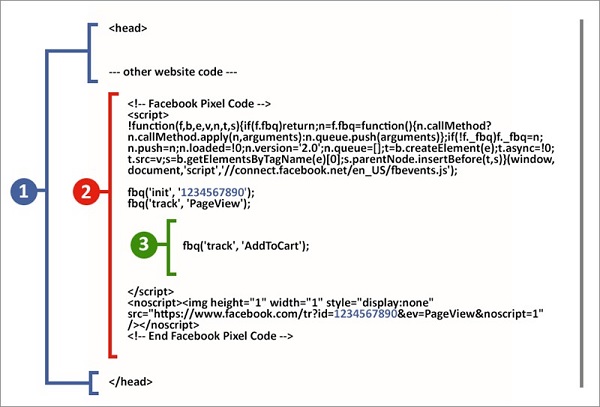
If you are not sure which targeting settings to set, rely on Facebook. For novice marketers and advertisers, the service offers a ready-made audience template. The list contains over 600 samples for different niches. They are periodically updated and relevant.
A separate option is showing ads to an interested audience. Ads will be seen by users who interacted with a group or an account on a social network (left a comment, like, repost), visited the site (only if FB Pixel is installed).
Audience customization
In Facebook Ads, you don’t have to set up targeting settings every time. You can create several audiences once and then show ads to the selected group. What it gives:
- launching advertising in a few clicks – you don’t need to set up everything from scratch;
- lower risk of error – all settings have already been made, there is no risk that, due to a missing check mark, the advertisement will be seen by the wrong people;
- audience overlap is excluded – your ads will not compete with each other, this will avoid overestimating the bids for advertising purchases.

When setting up an audience, Facebook suggests using your own sources or choosing ready-made manager templates. Available options:
- a template from the Facebook Ads database – an option for novice businessmen;
- traffic on the site from Pixel, in addition, you can select an audience by duration of stay, visited pages, actions;
- download a list of clients from CRM – ads will be shown only to people who are in the client base: added online and offline;
- actions in applications – download the list of clients who have installed a mobile, desktop application;
- engagement – you can set up an audience of users who interacted with the account, content on Facebook, Instagram: visited the page, made reposts, left likes, comments.
Look-a-Like Audience
It is a tool that helps you find people who are similar to your customers. Artificial intelligence evaluates dozens of indicators: pages visited, interests, purchases, travel, interaction with other groups. The match level can be set as a percentage: 1% is the maximum match, but the number of added users will be small. The higher the value, the more divergence and wider audience.
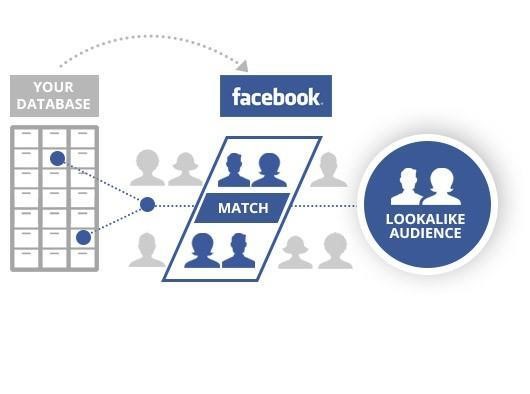
The tool allows you to connect up to 6 audiences. After completing the search, it will show how many people were found matching the specified criteria. If the audience is too small, it is worth increasing the blur. For GEO with a population of about 100,000 people the recommended figure is 2-3%.
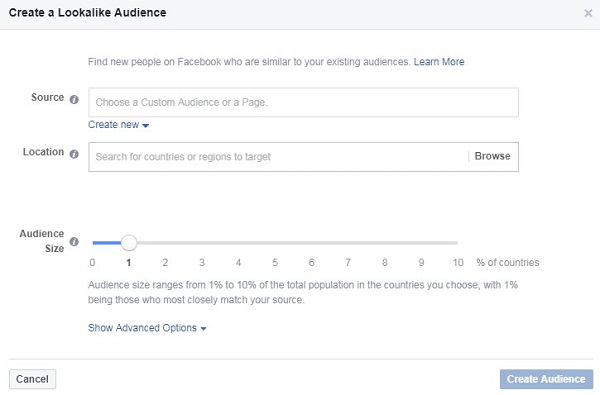
Automatic rules
Launching advertising on Facebook is simplified as much as possible – the system itself controls the budget, can distribute it in favor of more converting ads, and evenly displays ads throughout advertising campaigns. But there are still a lot of “buts”.
There are no perfect ad campaigns. Holidays or vice versa, emergencies that have changed the behavior of the target audience. Inflated cost of clicks or vice versa, the budget is spent too slowly. For this case, the Ads Manager has a fuse – “Automatic rules”.
They can only be applied to active campaigns or running ads / groups. There are four actions available:
- disable ads;
- send a message;
- increase / decrease the budget;
- change manual rates.
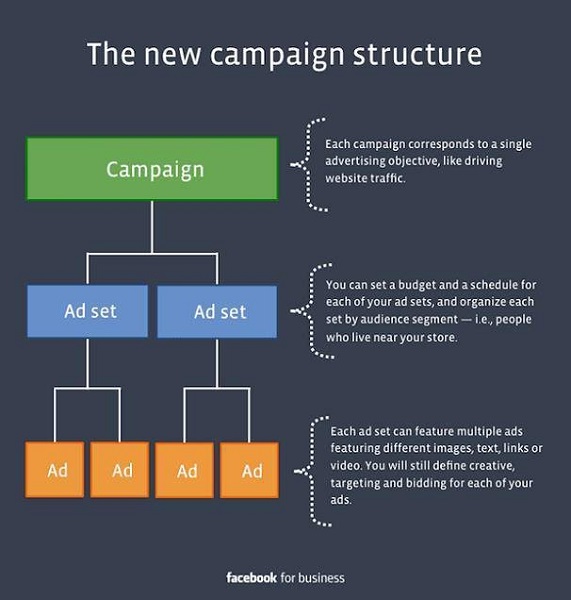
Actions can be customized by setting certain conditions. For example, upon reaching a certain number of conversions, stopping the campaign or sending a notification is relevant for promotional offers. Available categories:
- “common”: daily costs have reached a certain size, the frequency of views by one person, the number of conversions, the cost of a lead, the price of the install, the time since launch;
- “cost of conversion”: average cost of conversion, cost of adding an item to the cart, cost of registration and cost per placed order;
- “other” – average cost per click (CPC), average cost of 1000 impressions (CPM), click-through rate, number of impressions during the campaign, reach of unique users.
You can configure the time range when the rules are in effect, specify contacts where to send notifications.
Automatic rules do different things. Audience burnout can be prevented. If users see the same ad frequently, the click-through rate will drop and the cost per lead will rise. In “Ad Manager” you can stop ads that are often seen by the same users. To do this, set the settings:
- apply to the ad;
- Action – disable ads;
- Condition – frequency> 3;
- Time range – for the last week.
If you need to prevent going over budget or to avoid higher conversion costs, set a rule for an ad or a group, specify the maximum lead price (a pixel must be connected) and the number of impressions after which you need to make a calculation. We select the rule: “disable display” or send a notification”, if we are monitoring the indicator manually. We use similar settings if you need to control the cost of a click. Just select the “CPC” condition.
Tips for optimizing your Facebook campaigns:
- constantly monitor the campaign, even if you have chosen automatic settings. If the bid is too high or the conversion is too low, you can always make changes: replace the creative, limit the bid, change the targeting settings;
- Find a balance in reaching your audience. If it is too narrow, you will lose part of your target audience, higher competition will lead to an increase in bids, and there is no guarantee that the conversion will increase. If the reach is too large, the audience will be blurry, there are many non-targeted clicks, the budget will be quickly spent;
- use spy services – track competitors’ campaigns, spy on creatives, this will simplify your work and allow you to correctly set targeting settings without lengthy tests;
- after launching an advertising campaign, let the system go through training – do not make settings until you have received at least 50 impressions;
- Pixel script can be installed not only on the site, but also on pop-up ads (Popup, Popunder). Even if it is not necessary for the selected purpose, eliminate the script with the launch of the first Facebook advertising campaign;
- play with ad design. Sometimes a mosaic works better than a single image; product photos on a light neutral background have a higher CTR.
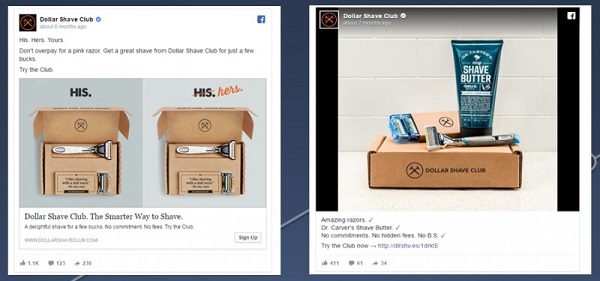
I do not recommend using the topic of sex. Too explicit pictures won’t be allowed by Facebook. even if you manage to push them through, you should not count on a high CR. Nudity is poorly remembered, associated with unreliability – it is often used by scammers. It collects a lot of non-targeted clicks, sometimes 200-300% increases the cost of a lead.
Video about strategies for optimizing advertising campaigns on Facebook

